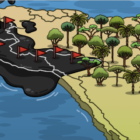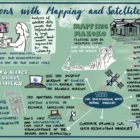Top 10 in Data Journalism
Data Journalism Top 10: Celebrity Jets, Amazon Destruction, Pakistan Floods, Meme Origins
|
This week’s Top 10 in Data Journalism features the carbon footprint of celebrity jets, the unsanctioned destruction of the Amazon, secret documents seized from Trump, massive Pakistan flooding, and a look into the history of memes.






